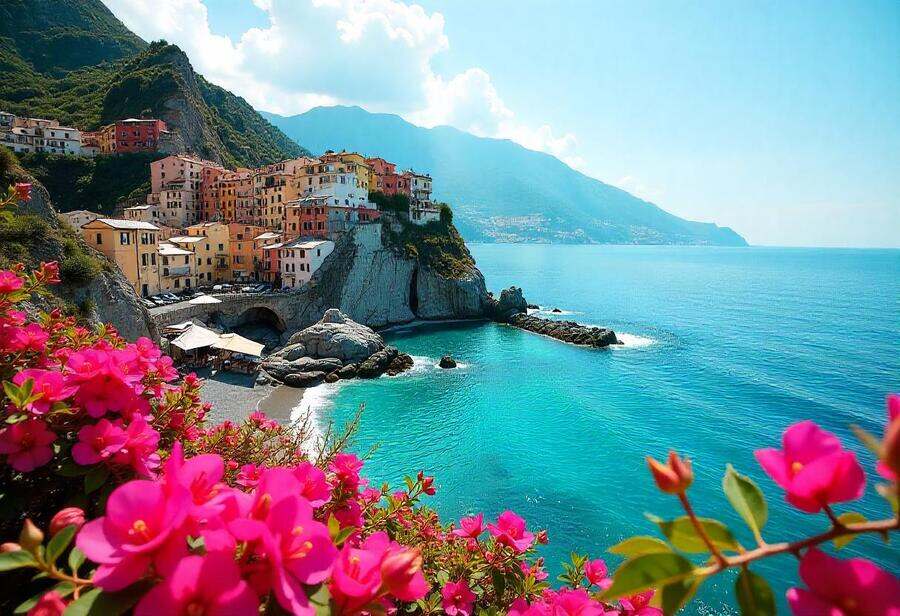≡-Santorini Tourism Revenue Plummets Over Twenty Percent In 2025 Shaking The Island’s Economy And Local Businesses To Their Core – Viral of Today
<> Viral of Today <>
Home » TOURISM NEWS » Santorini Tourism Revenue Plummets Over Twenty Percent In 2025 Shaking The Island’s Economy And Local Businesses To Their Core Published on
August 27, 2025Santorini, one of Greece’s most iconic travel destinations, is facing a sharp economic shock in 2025 as tourism revenue plunges by more than twenty percent, leaving the island’s economy and local businesses struggling to cope. Once heavily reliant on steady streams of international visitors, the drop reflects shifting travel patterns, rising global costs, and growing competition from other Mediterranean hotspots, all of which have shaken Santorini’s financial foundation and deeply disrupted the livelihoods of its residents.Santorini, long celebrated as one of Greece’s most iconic travel destinations, is experiencing a striking downturn in tourism revenue in 2025. Recent data from the Hellenic Statistical Authority reveal that both the island’s hotel and restaurant sectors have faced sharp declines this year, underscoring the fragility of even the most popular tourist hubs. Hotels on Santorini recorded a 22.1% drop in turnover during the second quarter compared to the same period in 2024, while restaurant revenues fell by 21%. These declines are particularly alarming given the island’s reputation as a top choice for international travelers seeking sun-soaked landscapes, picturesque villages, and luxury hospitality.Greece’s broader accommodation industry, by contrast, continues to show modest growth. Across the country, hotel turnover increased by 2.6% in the second quarter of 2025, reaching nearly 2.98 billion euros. The food service sector, however, experienced a mirror-image downturn, falling by 2.6% to around 2.73 billion euros. This contrast highlights how tourism recovery has remained uneven across different regions and sectors, with some areas flourishing while others struggle.Regional variations in tourism performance offer a clear perspective on Santorini’s difficulties. Corfu, for example, recorded a robust 10.7% rise in hotel revenues during the same period. Similarly, Chania in Crete saw a modest 2.7% increase, signaling steady demand for accommodations there. Santorini, however, emerged as the region most severely affected, with losses far exceeding those of other major destinations. Analysts suggest that this vulnerability may stem from the island’s heavy reliance on international travel and high-end tourism, sectors that remain sensitive to economic shifts, changing travel patterns, and global uncertainties.Restaurants on Santorini experienced similar setbacks, recording the steepest decline among Greece’s top tourist islands. Revenues in the restaurant sector fell by 21%, reflecting reduced visitor numbers, shorter stays, and shifts in spending habits. By comparison, Zakynthos reported a 7.3% increase in restaurant revenue, while regions such as Evia and Kos recorded only marginal decreases of 0.2%. These contrasting results underscore the complex dynamics of tourism recovery, where some destinations have quickly regained momentum, while others lag behind despite their longstanding appeal.The drop in Santorini’s tourism revenue has implications beyond the hospitality sector. Local businesses, from souvenir shops to tour operators, rely heavily on tourist spending, and the sharp decline has created economic strain across the island. Seasonal workers, often dependent on summer and early autumn tourism, face fewer employment opportunities, affecting livelihoods and the broader local economy. Additionally, infrastructure investments and expansion plans for hotels and restaurants may be delayed or reconsidered, potentially slowing the island’s ability to recover quickly.Experts point to several factors behind Santorini’s downturn. Changes in global travel trends, fluctuating airfares, and geopolitical uncertainties have affected the flow of visitors from key markets. High-end travel, which forms a significant portion of Santorini’s visitor base, has been particularly vulnerable to economic shifts, leading to shorter stays and reduced discretionary spending. Meanwhile, other Greek destinations, including Corfu and Crete, have benefited from a more diverse visitor profile, attracting both budget-conscious travelers and longer-term vacationers.Despite these challenges, Santorini remains a highly desirable destination. Its volcanic landscapes, iconic whitewashed architecture, and panoramic views of the caldera continue to draw visitors from around the world. Tourism authorities are exploring strategies to diversify offerings and attract new markets, including promoting off-season experiences, cultural tours, and adventure-based activities. Local businesses are also adjusting, introducing packages and promotions aimed at extending visitor stays and encouraging repeat travel. These measures could help stabilize revenue streams and gradually restore Santorini’s economic performance in the coming years.Comparing Santorini to other regions illustrates the uneven nature of Greece’s tourism recovery. While Corfu experienced a notable increase in hotel revenue, Santorini’s losses indicate that relying heavily on traditional tourism models can expose destinations to heightened risk. Chania’s smaller growth reflects steady, if slower, recovery patterns, while Zakynthos’s restaurant revenue gains demonstrate the potential for regional adaptation and resilience. Evia and Kos, with minimal declines, show that even minor adjustments in marketing, infrastructure, and services can help maintain visitor engagement and revenue generation.Looking ahead, stakeholders on Santorini are focusing on sustainability and diversification as key strategies. By promoting experiences beyond conventional sightseeing and luxury accommodation, including local culinary tours, hiking trails, and cultural festivals, the island hopes to attract a wider range of visitors. Authorities are also investing in infrastructure improvements, including upgraded transport links and enhanced visitor services, aiming to provide a seamless and enjoyable experience that can boost spending and encourage repeat visits.Santorini’s tourism revenue has plunged by over twenty percent in 2025, as rising travel costs and competition from rival Mediterranean destinations shake the island’s economy and leave local businesses struggling.In conclusion, Santorini’s tourism sector has faced a sharp setback in 2025, with significant declines in both hotel and restaurant revenues. While Greece as a whole shows modest growth in accommodation and mixed results in food services, Santorini’s losses highlight the challenges of relying heavily on international and high-end tourism. Regional comparisons, including positive performance in Corfu, Chania, and Zakynthos, underline the uneven nature of recovery across the country. Nonetheless, Santorini’s enduring appeal, combined with strategic efforts to diversify offerings and enhance visitor experiences, suggests that the island can overcome current challenges and gradually rebuild its tourism economy in the coming years.
This information will surprise you!
See also
- Read until the end to discover everything.
- Important information you need to know.
- Interesting facts and helpful tips.
Conclusion
Did you enjoy the news? Keep following us daily!













